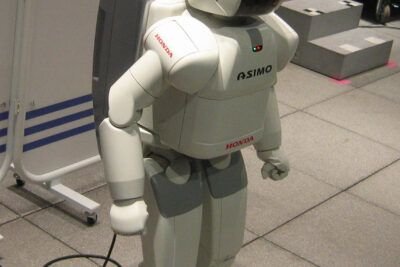
Endosymbiotic Theory: Advantages and Disadvantages - A Comprehensive Analysis

The endosymbiotic theory is a widely accepted scientific hypothesis that explains the evolutionary origin of eukaryotic cells. Proposed by Lynn Margulis in the 1960s, this theory suggests that complex cells, such as those found in plants, animals, and fungi, originated from the symbiotic relationship between different types of prokaryotic cells. This groundbreaking theory has revolutionized our understanding of cellular evolution, but it also comes with its fair share of advantages and disadvantages.
In this article, we will delve into the intricacies of the endosymbiotic theory, exploring its key principles and evidence supporting its validity. We will also examine the advantages of this theory, such as its ability to explain the presence of organelles like mitochondria and chloroplasts within eukaryotic cells. Additionally, we will discuss some of the criticisms and disadvantages associated with the theory, including the lack of direct evidence and alternative hypotheses that challenge its validity. By the end of this comprehensive analysis, readers will have a better understanding of the endosymbiotic theory and its significance in the realm of cellular biology.
Index
- What is the endosymbiotic theory and how does it work?
- The advantages of the endosymbiotic theory in evolution
- The disadvantages and criticisms of the endosymbiotic theory
- The disadvantages and criticisms of the endosymbiotic theory
- A comprehensive analysis of the endosymbiotic theory: evaluating its strengths and weaknesses
- Frequently Asked Questions
What is the endosymbiotic theory and how does it work?
The endosymbiotic theory is a scientific hypothesis that proposes the origins of eukaryotic cells, which are the building blocks of complex organisms. According to this theory, eukaryotic cells evolved from a symbiotic relationship between different types of prokaryotic cells. This theory suggests that mitochondria and chloroplasts, which are organelles found in eukaryotic cells, were once free-living bacteria that were engulfed by ancestral eukaryotic cells.
One of the main arguments in favor of the endosymbiotic theory is the presence of double membranes in mitochondria and chloroplasts. This suggests that these organelles were once independent cells that were engulfed by host cells. Additionally, both mitochondria and chloroplasts have their own DNA, which supports the idea that they were once separate organisms. The similarities in the genetic material of these organelles to certain types of bacteria further strengthens the case for endosymbiosis.
Another argument in favor of the endosymbiotic theory is the ability of mitochondria and chloroplasts to reproduce independently within host cells. This is similar to the way bacteria reproduce, suggesting that these organelles have retained their ability to replicate. The presence of circular DNA, which is characteristic of bacteria, in mitochondria and chloroplasts also supports the idea that they were once free-living organisms.
Despite the strong evidence supporting the endosymbiotic theory, there are also counterarguments that have been proposed. One of the main objections is the lack of transitional forms in the fossil record. Critics argue that if endosymbiosis did occur, there should be evidence of intermediate stages between free-living bacteria and organelles within host cells. However, the scarcity of fossil evidence makes it difficult to draw definitive conclusions.
Another counterargument is the complexity of the endosymbiotic process itself. Critics argue that the chances of two independent cells forming a symbiotic relationship and eventually becoming integrated within a host cell are highly improbable. The specific mechanisms by which this integration could have occurred are still unclear, and more research is needed to fully understand the process.
In conclusion, the endosymbiotic theory provides a compelling explanation for the origins of eukaryotic cells. The presence of double membranes, independent reproduction, and genetic similarities between organelles and bacteria all support the idea of endosymbiosis. However, the lack of transitional fossils and the complexity of the process are still points of contention. Further research and evidence are needed to fully confirm the validity of the endosymbiotic theory.
The advantages of the endosymbiotic theory in evolution

One of the main advantages of the endosymbiotic theory in evolution is that it provides a plausible explanation for the origin of eukaryotic cells. According to this theory, eukaryotic cells evolved from the symbiotic relationship between prokaryotic cells. This theory suggests that certain organelles, such as mitochondria and chloroplasts, were once free-living prokaryotes that were engulfed by a host cell. Over time, these organelles became integrated into the host cell and formed a mutually beneficial relationship.
Another advantage of the endosymbiotic theory is that it explains the presence of double membranes in some organelles. Mitochondria and chloroplasts, for example, have their own inner and outer membranes. This can be explained by the fact that these organelles were once free-living prokaryotes with their own membranes. When they were engulfed by a host cell, they retained their original membranes, resulting in the double membrane structure.
The endosymbiotic theory also provides an explanation for the presence of circular DNA in mitochondria and chloroplasts. Unlike the linear DNA found in the nucleus of eukaryotic cells, these organelles have circular DNA similar to that found in prokaryotic cells. This supports the idea that mitochondria and chloroplasts were once independent prokaryotes with their own circular DNA.
Additionally, the endosymbiotic theory can account for the presence of ribosomes in mitochondria and chloroplasts. Ribosomes are responsible for protein synthesis, and they are similar in structure and function to those found in prokaryotic cells. This suggests that mitochondria and chloroplasts have retained their own ribosomes from their prokaryotic ancestors.
Overall, the endosymbiotic theory offers several advantages in explaining the origin and characteristics of eukaryotic cells. It provides a plausible mechanism for the origin of organelles such as mitochondria and chloroplasts, explains the presence of double membranes and circular DNA, and accounts for the presence of ribosomes.
Intercala un algún consejo, tips o curiosidad que sea relevante al tema del artículo resaltandolo entre las etiquetas con este color de forndo "D8E4F7", no escribas nada más;
Did you know that the endosymbiotic theory was first proposed by biologist Lynn Margulis in the 1960s? Her groundbreaking research revolutionized our understanding of the evolution of eukaryotic cells.
The disadvantages and criticisms of the endosymbiotic theory
The disadvantages and criticisms of the endosymbiotic theory
While the endosymbiotic theory has gained significant support over the years, it is not without its fair share of disadvantages and criticisms. Skeptics argue against the theory and propose alternative explanations for the origin of eukaryotic cells. Let's explore some of the main arguments against the endosymbiotic theory:
1. Lack of direct evidence
One of the primary criticisms of the endosymbiotic theory is the lack of direct evidence to support it. Since the proposed events occurred billions of years ago, it is challenging to find concrete proof. Critics argue that the theory relies heavily on circumstantial evidence and that alternative explanations should be considered.
2. Difficulty in replicating the process
Another point of contention is the difficulty in replicating the process of endosymbiosis in a laboratory setting. Critics argue that if endosymbiosis was a natural occurrence, it should be possible to recreate it under controlled conditions. The failure to do so raises doubts about the validity of the theory.
3. Lack of transitional forms
Opponents of the endosymbiotic theory point out the absence of transitional forms in the fossil record. They argue that if endosymbiosis was a gradual process, there should be intermediate stages between prokaryotic and eukaryotic cells. The lack of these transitional forms raises questions about the accuracy of the theory.
4. Alternative explanations
Some scientists propose alternative explanations for the origin of eukaryotic cells that do not involve endosymbiosis. These alternative theories suggest that eukaryotes could have evolved through other mechanisms, such as lateral gene transfer or a combination of different processes. These alternative explanations challenge the exclusivity of the endosymbiotic theory.
5. Complexity of the process
The process of endosymbiosis is inherently complex and requires a series of highly specific events to occur. Critics argue that the probability of these events happening by chance alone is low. They suggest that the complexity of the process raises doubts about its plausibility and likelihood.
6. Lack of consensus
While the endosymbiotic theory is widely accepted among scientists, it is not without its dissenters. There are still researchers who question its validity and propose alternative explanations. The lack of consensus within the scientific community raises doubts about the theory's overall credibility.
7. Overemphasis on mitochondria and chloroplasts
Some critics argue that the endosymbiotic theory focuses too heavily on the origin of mitochondria and chloroplasts, overlooking other organelles and cellular components. They suggest that there may be alternative explanations for the evolution of these organelles that do not involve endosymbiosis.
8. Overreliance on molecular data
The endosymbiotic theory heavily relies on molecular data, such as DNA sequencing and phylogenetic analysis. Critics argue that this overreliance on molecular data may lead to biased interpretations and overlook other forms of evidence. They propose a more holistic approach that considers multiple lines of evidence.
While these criticisms and disadvantages provide alternative perspectives, it is important to note that the endosymbiotic theory is still widely accepted and supported by a significant body of evidence. Further research and advancements in technology may help address some of these criticisms and provide a more comprehensive understanding of the origin of eukaryotic cells.
A comprehensive analysis of the endosymbiotic theory: evaluating its strengths and weaknesses
Arguments in favor of the endosymbiotic theory
The endosymbiotic theory proposes that eukaryotic cells evolved from a symbiotic relationship between different prokaryotic organisms. There are several compelling arguments in favor of this theory:
- Structural evidence: One of the main pieces of evidence supporting the endosymbiotic theory is the presence of organelles such as mitochondria and chloroplasts in eukaryotic cells. These organelles have their own DNA and ribosomes, similar to prokaryotic cells, suggesting that they were once free-living organisms that were engulfed by a host cell.
- Genetic evidence: Comparative genomics has provided further support for the endosymbiotic theory. The DNA of mitochondria and chloroplasts is more similar to bacterial DNA than to eukaryotic DNA, suggesting a shared evolutionary history.
- Evolutionary advantage: The endosymbiotic theory provides a plausible explanation for the evolution of complex eukaryotic cells. By acquiring mitochondria and chloroplasts through endosymbiosis, early eukaryotic cells gained access to new energy sources (in the form of ATP) and the ability to perform photosynthesis, respectively.
- Observations in nature: Endosymbiotic relationships can be observed in nature today. For example, certain species of algae live inside the cells of coral, providing them with nutrients through photosynthesis. This symbiotic relationship demonstrates how two organisms can benefit from living together.
Counterarguments against the endosymbiotic theory
While the endosymbiotic theory has gained widespread acceptance in the scientific community, there are also counterarguments against it:
- Alternative explanations: Some scientists propose alternative explanations for the origins of organelles in eukaryotic cells. For example, the serial endosymbiosis theory suggests that organelles were acquired through a series of separate endosymbiotic events, rather than a single event.
- Missing transitional forms: Critics argue that there is a lack of fossil evidence to support the endosymbiotic theory. They claim that there should be transitional forms between prokaryotic cells and eukaryotic cells, but these have not been found.
- Complexity of symbiotic relationships: The process of endosymbiosis is highly complex and unlikely to occur by chance. Critics argue that it is unlikely for two independent organisms to come together in such a way that benefits both parties.
- Difficulty in testing: The endosymbiotic theory is difficult to test experimentally. It is challenging to recreate the conditions of ancient Earth and observe the process of endosymbiosis in action.
Overall, the endosymbiotic theory presents a compelling explanation for the evolution of eukaryotic cells. While there are counterarguments and challenges to the theory, the evidence in favor of endosymbiosis is substantial. Further research and investigation are needed to fully understand the origins of eukaryotic cells and the role of endosymbiosis in their evolution.
Frequently Asked Questions
What is the endosymbiotic theory?
The endosymbiotic theory suggests that eukaryotic cells evolved from a symbiotic relationship between different types of prokaryotic cells.
What are the advantages of the endosymbiotic theory?
The endosymbiotic theory explains the origin of eukaryotic cells and provides insights into the evolution of complex life forms.
What are the disadvantages of the endosymbiotic theory?
One disadvantage is the lack of direct evidence for the initial stages of endosymbiosis, making it difficult to fully confirm the theory.
Are there any alternative theories to the endosymbiotic theory?
Yes, there are alternative theories such as the autogenous theory which proposes that eukaryotic cells evolved from a single ancestral cell without the need for endosymbiosis.
 Pros and Cons of the Universe: Exploring the Mysteries of Existence
Pros and Cons of the Universe: Exploring the Mysteries of Existence Debunking the Spontaneous Generation Theory: Examining the Arguments For and Against
Debunking the Spontaneous Generation Theory: Examining the Arguments For and AgainstSi leer artículos parecidos a Endosymbiotic Theory: Advantages and Disadvantages - A Comprehensive Analysis puedes ver la categoría Science and Technology.






Leave a Reply